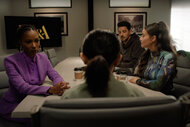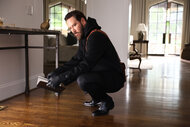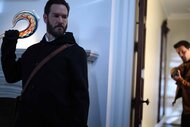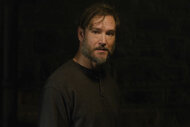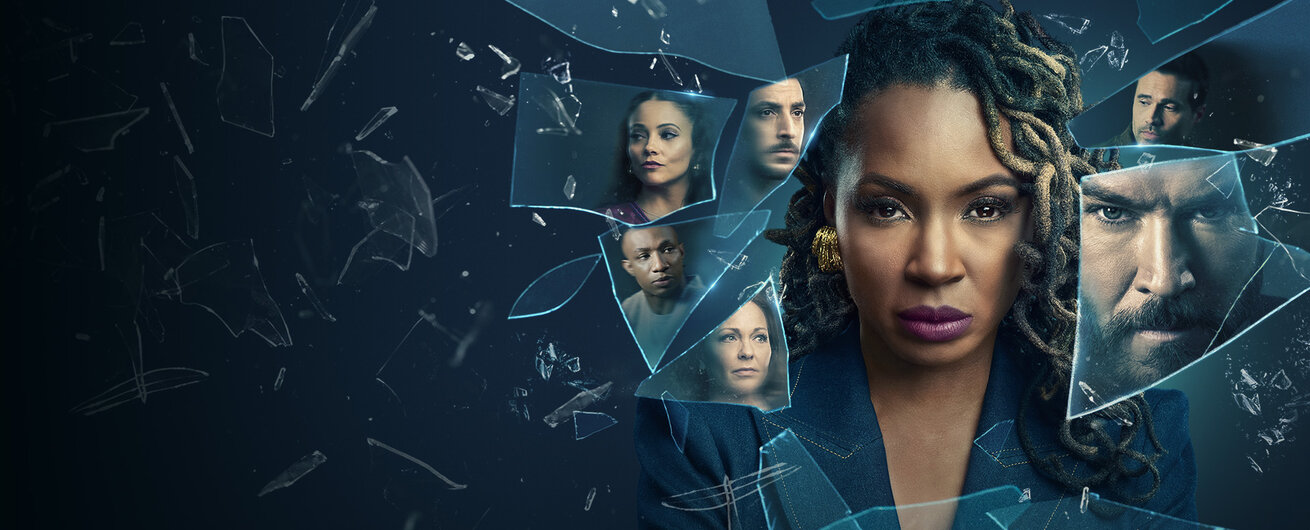Create a free profile to get unlimited access to exclusive show news, updates, and more!
Do Traffickers Use Child Victims To Lure In Other Ones, Like on Found?
A cunning and elusive human trafficker on Found relied on a lost 16-year-old kid to get new victims, but is it a strategy used in the real world?
Human traffickers use devious tricks and deception of all kinds to lure in their child victims — and they aren’t above using other children.
The dramatic scenario that played out in Found as a teenage Tony helped lure his younger friend Matthew into a sex trafficker’s grasp on Episode 4 is, unfortunately, not far from the real-world tactics some traffickers use.
“Traffickers tend to prey on people who are economically or socially vulnerable such as youth who are living in poverty, or on the streets, or experience physical or sexual abuse, or addiction,” Polaris, an anti-trafficking organization, explained on its website. “They pose as a friend, offering to (bring) meals, gifts, or just a sympathetic ear. In some cases, traffickers may use another young person to befriend and recruit their victims.”
How do child traffickers use other child victims to lure others?
Sabrina Thulander, associate director of communications for Polaris, told NBC Insider that traffickers often begin by building a trusting relationship with their victim by filling their unique needs.
“I think where a lot of traffickers find their, like, ‘success’ is that they present themselves as a credible figure to their victims,” she said. “What that looks like for each prospective person is different, but you know, they are masters at being who victims need them to be or want them to be at that time.”
To add to their legitimacy, some traffickers turn to other children to lure in their victims.
RELATED: Gabi and Sir’s Relationship Takes a Dramatic Turn on Found — What Happened
The disturbing strategy was allegedly used by convicted sex offender and wealthy financier Jeffrey Epstein, who was accused of sexually abusing and exploiting “dozens” of underage girls at his lavish mansions in New York and Florida.
Epstein took his own life behind bars in August 2019 before he could ever be convicted of the federal charges against him, but a federal affidavit outlined the chilling ways he was accused of finding new victims. (Epstein did plead guilty to Florida state prostitution charges involving minors in 2007).
“In order to maintain and increase his supply of victims, Epstein also paid certain of his victims to recruit additional girls to be similarly abused by Epstein,” the federal court documents alleged. “In this way, Epstein created a vast network of underage victims for him to sexually exploit in locations including New York and Palm Beach.”
Authorities said he “incentivized” his victims to become recruiters for him by “paying these victim-recruiters hundreds of dollars for each girl that they brought to Epstein.”
Crystal Blanton, the co-chair of the Marion County Human Trafficking Task Force in Florida told local station WKMG-TV in 2018 that in addition to scouting for victims online many traffickers turn to the school yards.
"There are recruiters, juvenile recruiters in the schools, working with a pimp of some kind, and they are sent out in the schools and given a job to bring other minors on board," she said.
How did trafficking impact the missing person case on Found?
The real-world examples are similar to the fictional story that played out on Season 1, Episode 4 of Found.
The team raced against the clock to try to find 13-year-old Matthew before he could be sold by a human trafficker.
Matthew disappeared after his father dropped him off outside a church, where he was supposed to go inside and meet his mom. Instead, the young teen — who had been struggling with his parents’ nasty divorce — headed to a livestream gaming event where he was captured on video getting into a dark sedan.
Gabi Moseley, portrayed by Shanola Hampton, and her team finally cracked the case after Gabi sought advice from Sir (Mark-Paul Gosselaar), the man who once kidnapped her and is now being held captive in her basement.
Sir concluded that a “child not an adult” lured Matthew into trafficking after his “world turned upside down when his parents divorced” and he felt angry with the adults in his life.
“He doesn’t trust adults anymore which leaves the only other option: a child,” Sir said. “Now this young person’s intelligent, a fellow child of divorce too, who also feels betrayed.”
Using this clue, Gabi and her team identified 16-year-old Tony, Matthew’s friend from a divorce group meant to help children and their fathers, as the person who helped to lure Matthew away.
They tracked both teens down to a seedy motel room just hours before the sale, but as they were trying to escape Tony was shot by the trafficker and left in a coma, while Matthew was reunited with his ecstatic parents.
The trafficker got away, but Gabi and her team vowed to track the person down to honor both teen victims.
Thulander stressed to NBC Insider that trafficking is often a long-term play by a highly manipulative individual and that the victims should never be to blame.
“One thing I wish people knew about trafficking is that it’s not abrupt in any way. Vulnerability to trafficking is a result of many other societal and systemic failures,” she said. “Shortcomings and failures that I would say most often are not the victim’s fault.”





